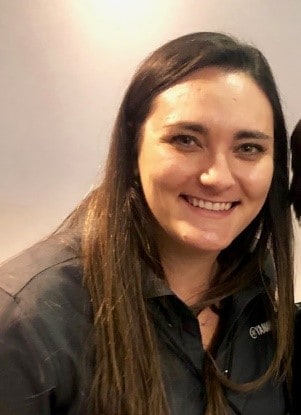Arizona’s MLTSS Program sets the VBP Standard
First up in our review of value-based purchasing in managed care MLTSS programs is Arizona. The program has gone through a variety of upgrades and changes but the state has committed to having a modern value-based purchasing structure.
THE VBP Blog

Arizona MLTSS History & Roll Out
The Arizona Health Care Cost Containment System (AHCCCS) [pronounced “access”] is the State’s Medicaid Agency, which uses Federal, state, and county funds to provide health care coverage to the state’s acute and long-term care Medicaid population. The AHCCCS began in 1982 with the Arizona Long Term Care System (ALTCS) began in 1989. By 2011, nearly 90% of Medicaid beneficiaries are enrolled in managed care.
Beginning in 2014, under Medicaid §1115 waiver authority, the AHCCCS provides health care services through a prepaid, capitated managed care delivery model that operates statewide. In July of that year, they submitted an application for CMS State Innovation Model Funding (SIM) to begin moving toward a value-based system.
Payment Modernization Plan
In 2014, Arizona launched its Payment Modernization Plan pinpointing value-based payment as a long-term initiative. From the plan’s mission, “to leverage the AHCCCS managed care model toward value-based health care systems where patients’ experience and population health are improved, per-capita health care cost is limited to the rate of general inflation through aligned incentives with managed care organization and provider partners, and there is a commitment to continuous quality improvement and learning.
In 2017, the AHCCCS partnered with the Health Care Payment and Learning and Action Network (LAN). According to their website, the goal of the program was to accelerate the state’s health care system adoption of alternative payment models (APMs).
As of 2021, there are 4 value-based structures that have been used by the AHCCCS Managed Care Organizations (MCO’s). Payment for performance (P4P), patient-centered medical home (PCMH), shared savings, and bundled payment.
Arizona required its MLTSS plans to have 35 and 50 percent of total provider payments in a VBP model for calendar years 2018 and 2019, respectively, and choose from a state-developed list of measures and state-approved payment models to meet those.
Awarded MCO’s for MLTSS
In March of 2017, the Arizona Health Care Cost Containment System (AHCCCS) announced awards for the three managed care organizations selected to provide all MLTSS services. The 3 chosen were Banner-University Family Care, Southwest Catholic Health Network Corporation dba Mercy Care Plan, and UnitedHealthcare Community Plan. In 2019, UnitedHealthcare and Mercy Care Plan were also awarded contracts to manage the Division of Developmental Disabilities (DDD) Health Plans.
Case Management
Case management and care coordination is handled through the DDD. The ALTCS methodology for their member-centered, whole-person care coordination for the MLTSS communities includes:
- Service Planning and Coordination
- Brokering of Services
- Facilitation and Advocacy
- Monitoring and Assessing
- Review and Reassessment
There are 150,000 eligible Arizonians dually eligible for Medicare and Medicaid. They represent 20% of Medicare enrollees and 15% of Medicaid enrollees, they account for about a third of total spending in both programs. Those disabled or over 65 that are eligible are automatically enrolled. The state is developing integration this year to align and improve service delivery. They are contracting with the Medicare Advantage Dual Special Needs Plans (D-SNPs) that partner with the AHCCCS Complete Care Medicaid health plan to create a coordinated effort.
Advocate’s Perspective
Arizona has taken an innovative and aggressive approach to integrating value-based care into their MLTSS managed care program. Their ability to adjust and expand into different levels of the VBP continuum has kept them ahead of the curve. Their navigation from APMs to bundled payment structures will create a high quality of care and reduce costs. Plus, their alignment of care coordination for the dual-eligible members sets them apart from other programs.
Next up, we will take a look at Iowa and what their managed care MLTSS program has to offer.
Onward!
Share This Blog!
Get even more insights on Linkedin & Twitter

About the Author
Fady Sahhar brings over 30 years of senior management experience working with major multinational companies including Sara Lee, Mobil Oil, Tenneco Packaging, Pactiv, Progressive Insurance, Transitions Optical, PPG Industries and Essilor (France).
His corporate responsibilities included new product development, strategic planning, marketing management, and global sales. He has developed a number of global communications networks, launched products in over 45 countries, and managed a number of branded patented products.

About the Co-Author
Mandy Sahhar provides experience in digital marketing, event management, and business development. Her background has allowed her to get in on the ground floor of marketing efforts including website design, content marketing, and trade show planning. Through her modern approach, she focuses on bringing businesses into the new digital age of marketing through unique approaches and focused content creation. With a passion for communications, she can bring a fresh perspective to an ever-changing industry. Mandy has an MBA with a marketing concentration from Canisius College.
